Ascoli Piceno, in the southern part of Marche, is known as the City of a Hundred Towers. In the Middle Ages, these towers were built by noble families as both private fortresses and symbols of power, at one point the city counted over 200. Many are still visible today, giving the skyline its distinctive look.
Founded before Roman times by the Piceni people, Ascoli became a Roman municipium in 89 BC after the Social War. The city’s history is visible everywhere: Roman bridges still cross the Tronto River, medieval palaces line the streets, and Renaissance buildings frame its squares. Built from local travertine stone, Ascoli has kept a compact and authentic historic centre that’s easy to explore on foot and still feels lived in.
Things To Do in Ascoli
Piazza Del Popolo
Start your visit here. This is Ascoli’s heart and one of the most remarkable squares in Italy. Paved entirely with polished travertine stone, the same light-colored material used throughout the city, it reflects the sunlight and gives the whole space a distinctive brightness. The square is enclosed by elegant Renaissance and medieval buildings with uniform arcades that create a perfect sense of proportion and symmetry.
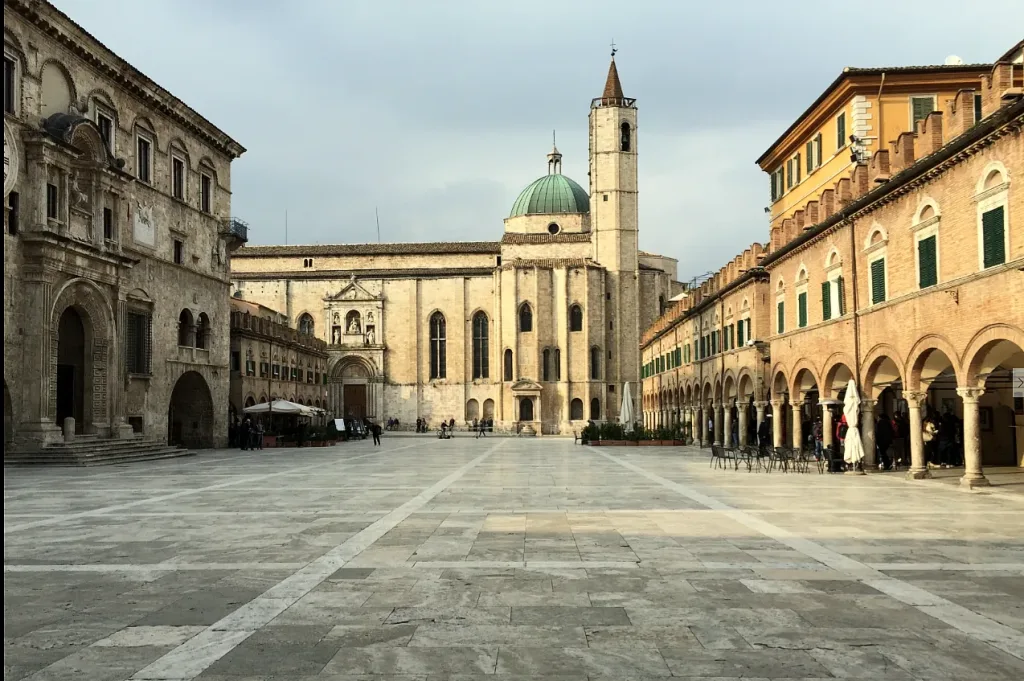
On one side stands Palazzo dei Capitani del Popolo, a 13th-century civic palace that once housed the city’s governors and now often hosts exhibitions and events. Facing it, you’ll find Caffè Meletti, opened in 1907, one of Italy’s historic cafés, decorated with stucco ceilings and pink marble, famous for serving Anisetta Meletti, the local anise liqueur.
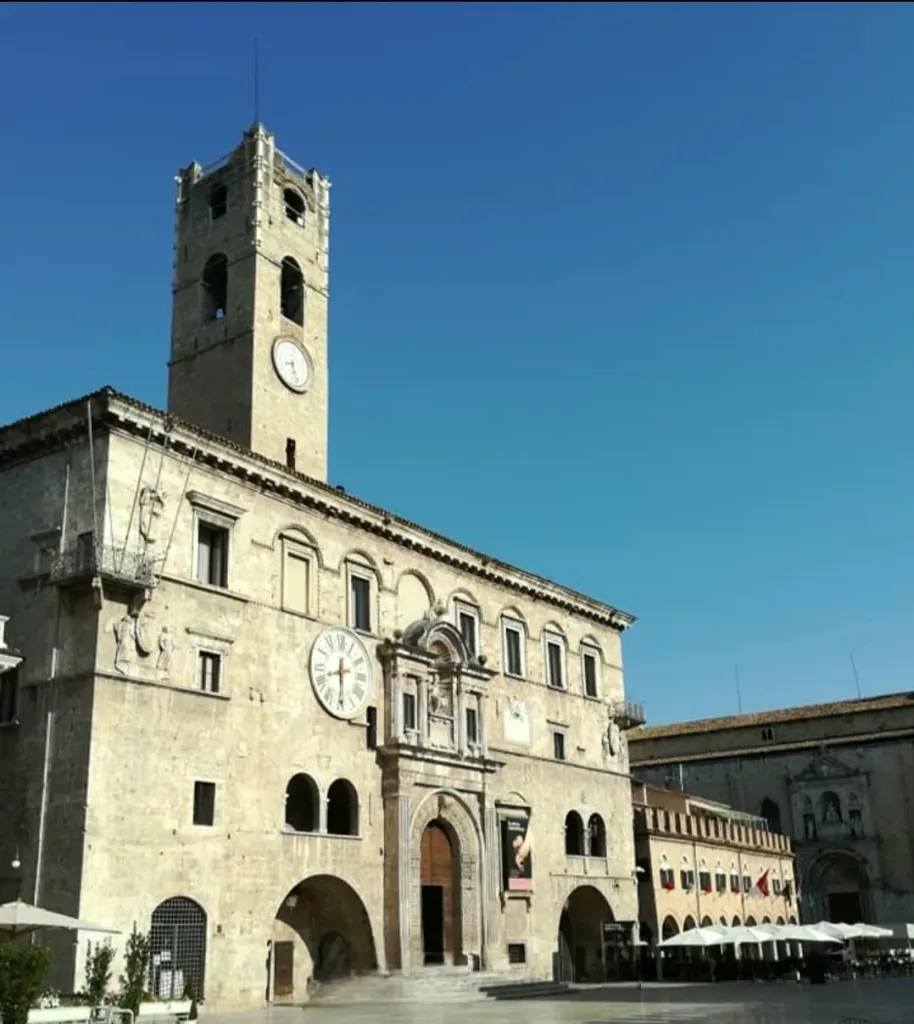
The square is also home to San Francesco Church, whose Gothic façade dominates one corner. Between the church, the palace, and the cafés under the arches, the atmosphere changes with the day: lively in the mornings, quieter at midday, and full of people again in the evening when locals meet for an aperitivo. Piazza del Popolo isn’t just the city’s main attraction — it’s where daily life naturally happens.
Piazza Arringo and Duomo
A short walk from Piazza del Popolo, Piazza Arringo is the oldest square in the city. It hosts the Cathedral of Sant’Emidio (Duomo), dedicated to Ascoli’s patron saint, and the Palazzo dell’Arengo, home to the Pinacoteca Civica, a civic art gallery featuring works from the Middle Ages to the Renaissance.
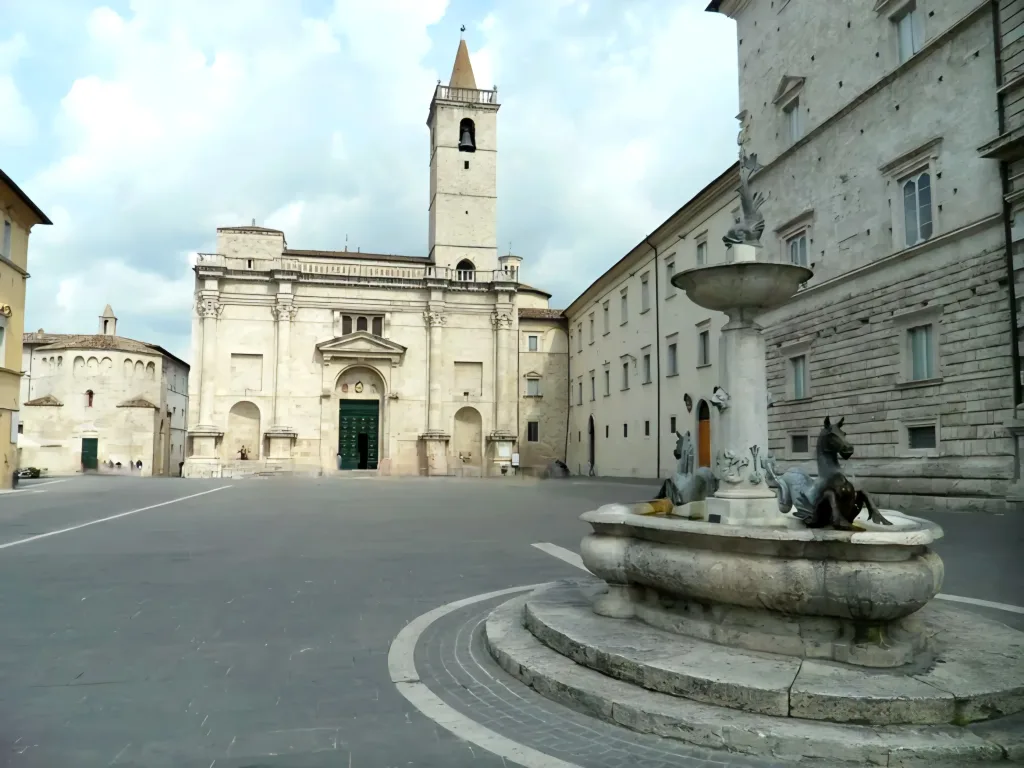
Inside the cathedral, you’ll find the crypt of Sant’Emidio, one of the most fascinating spots in town. The crypt preserves the remains of the saint and has remarkable frescoes. The church itself is a blend of Romanesque and Baroque styles, reflecting Ascoli’s long history. The ceilings of the Duomo are masterpiece, a walk inside is very recommended.
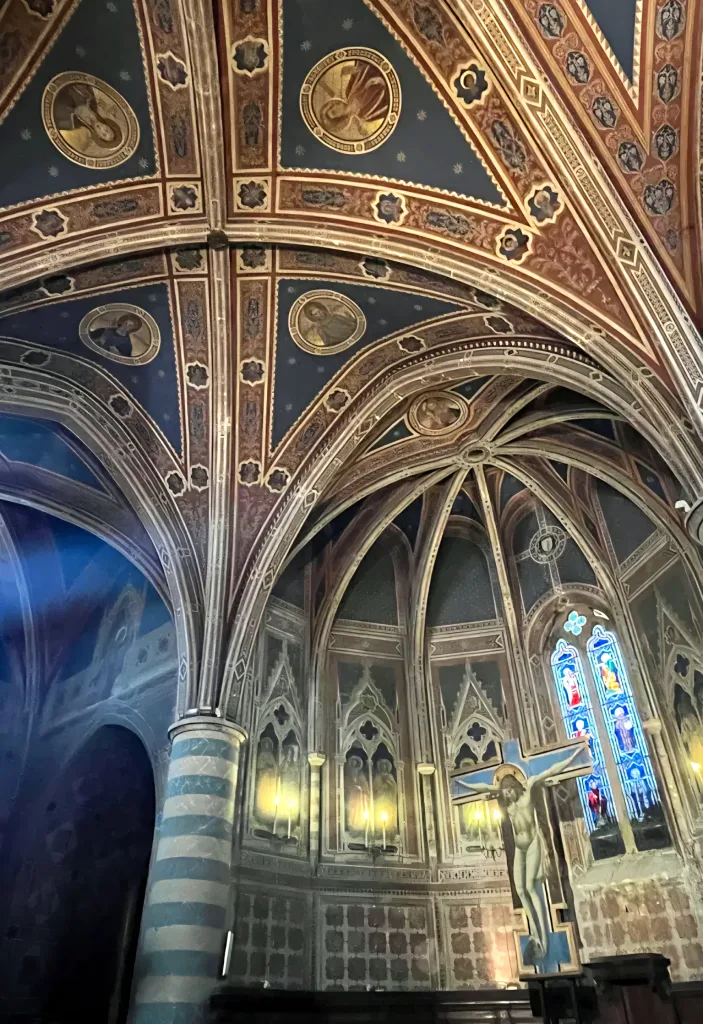
Ponte di Cecco and Ponte Romano di Solestà
Ascoli still preserves two Roman bridges that have stood for over 2,000 years. Ponte di Cecco is said to have been built by the legendary necromancer Cecco d’Ascoli, while Ponte di Solestà is a perfectly preserved example of Roman engineering, still in use today.

Tempietto di Sant’Emidio alle Grotte and Tempietto di Sant’Emidio Rosso
Once you passed Ponte Solestà, if you head toward via Bernardo Tucci, you will find the Tempietto di Sant’Emidio Rosso; while if you stay on via Adriano Rigante, turn right at viale Matteo Federici and follow the signs, you will find Tempietto di Sant’Emidio alle Grotte.
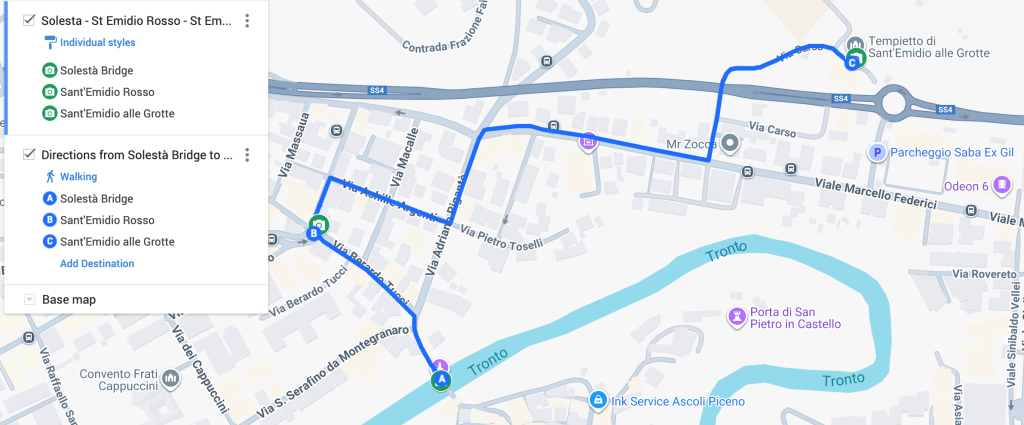
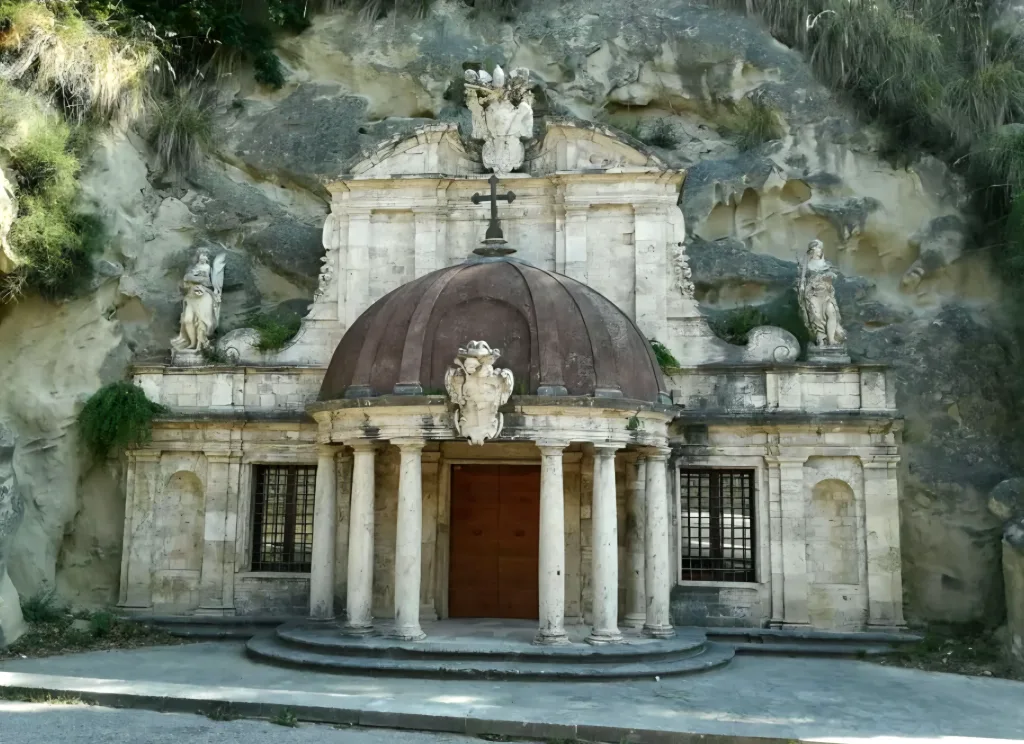

Forte Malatesta
Across the river Tronto stands the Forte Malatesta, a fortress rebuilt in the 16th century by Antonio da Sangallo the Younger. It now houses a museum explaining the city’s military history and offers panoramic views from the ramparts.

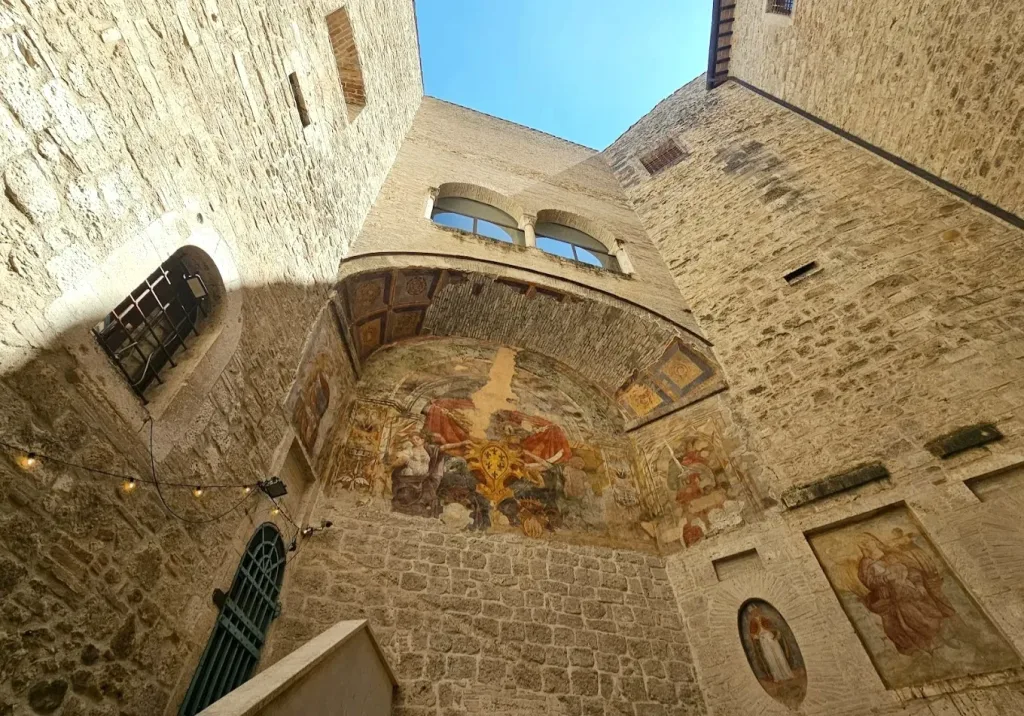
Eremo San Marco
About a 20-minute drive from Ascoli’s city centre, you can reach Colle San Marco, a hill area popular with locals for outdoor activities, picnics, and weekend walks. Hidden in the rock face overlooking the valley is the Eremo di San Marco, a small hermitage built directly into the cliff during the 13th century by monks seeking isolation and prayer. The structure, partly carved into the stone, offers panoramic views of Ascoli and the Tronto Valley below. It’s a quiet spot that combines history, architecture, and nature.

Festival and Events
- Quintana di Ascoli Piceno (July and August): the most famous event in Ascoli. A historic jousting tournament dating back to the 15th century, where knights on horseback represent the city’s neighbourhoods (sestieri). The main competition takes place in August, preceded by a parade of more than a thousand people in medieval costumes, flag throwers, and drummers. The atmosphere is festive but deeply traditional, with the whole city involved.
- Carnevale di Ascoli Piceno (February): Ascoli’s Carnival is known across central Italy for its creativity and satire. Locals perform short sketches and costumes inspired by current events or local stories, often taking place directly in Piazza del Popolo. It’s an event rooted in community participation rather than big floats or parades.
- Ascoli Jazz Festival, JazzAP (June – July): a series of concerts hosted in historic squares and courtyards, mixing local artists with national and international names. The atmosphere is relaxed, and events are usually free or low-cost.
Explore the Surroundings
From Ascoli, you can easily explore both mountains and coast. To the west, the Monti Sibillini National Park offers hiking trails, small mountain villages, and panoramic drives. To the east, San Benedetto del Tronto is about 30 minutes away and known for its beaches and palm-lined promenade. North of Ascoli, towns like Offida, Ripatransone, and Grottammare Alta are worth a stop for their historic centers, local wine, and views over the Piceno hills.
Cheap Accommodations near Ascoli
You can find many cheap accommodations near Offida following the links below:
Guided Activities near Ascoli
A list of guided and bookable activities can be found below:


Comments are closed.